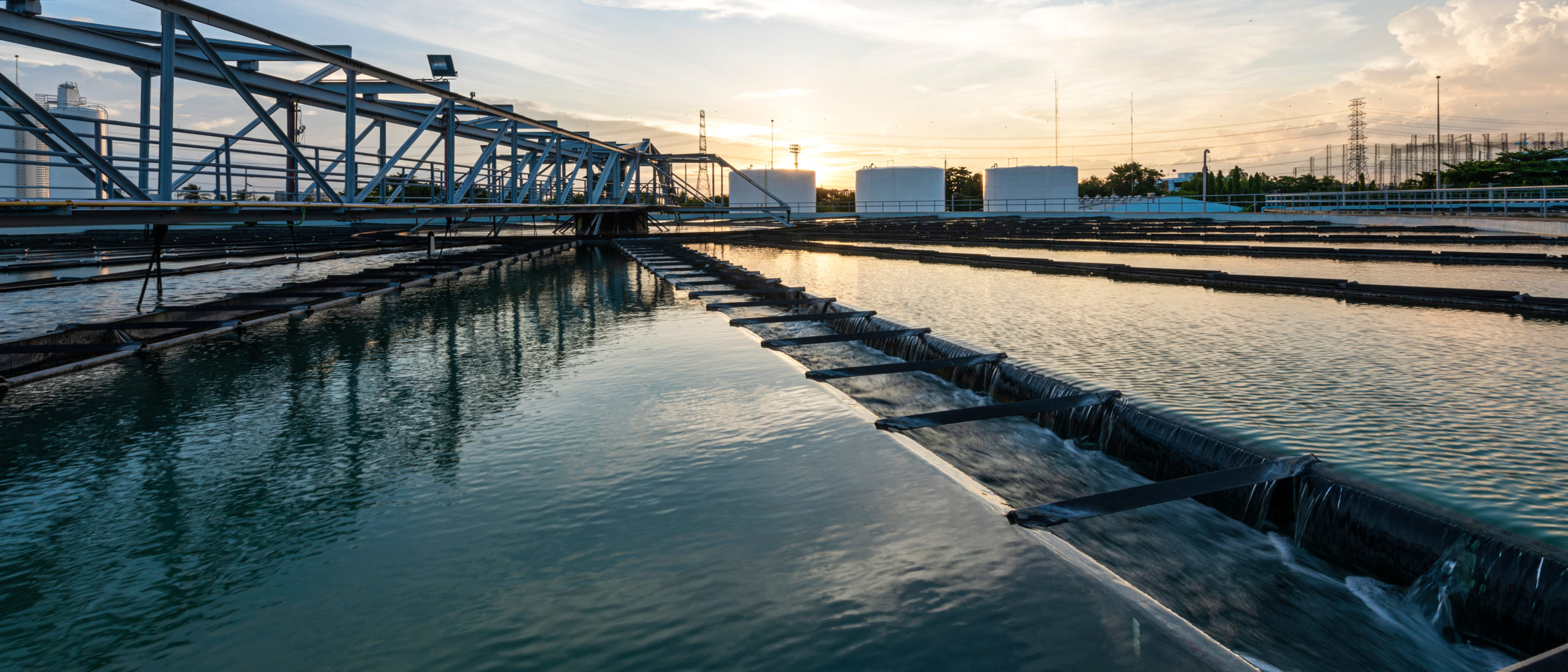Traditional wastewater treatment is composed of physical, biological, and chemical treatments. However, it’s the biological treatment that is arguably the most crucial step as it’s when most of the inorganic and organic waste (the dissolved and suspended solids in the wastewater) are used up for energy production or transformed into biomass and/or non-toxic gases.
The effectiveness of this treatment can differ, however, depending on the present bacteria. To gain the full benefits of biodegradation, the balance of bacteria needs to be specific for the wastewater and the treatment plant environment. Meaning required bacteria differs between plants.
Getting the biological treatment of wastewater right does not just benefit the treatment of the wastewater – providing more efficient biodegradation with reduction of by-product – it has the power to change the entire construction, cost, and footprint of the treatment plant itself.
Treatment plants are often missing the right microbial
Specific bacterial species play important and distinct roles in waste removal. Efficient wastewater treatment requires a mixed microbial population, rather than single microbial species. This enhances the biodegradation of waste.
However, the necessary microorganisms are not always naturally present or remain in low abundance in wastewater treatment facilities.
Conventional operational methods would rely on the transfer of activated sludge consisting of mixed microbial communities from an existing treatment plant into a new plant. However, because the composition of waste is not constant and depends on the characteristics of the wastewater treatment plant, the required bacterial species are not always present (or remain at low concentrations) in existing samples.
Relying on bacteria already present in wastewater or transferred from a similar treatment plant will still enable biological treatment to occur. However, it may not achieve the desired wastewater treatment efficiency by itself and may increase biomass, required tank size, and treatment time of contaminated wastewater. This, in turn, also increases the chances of side effects, including:
-
Inefficient waste removal
-
Excessive sludge formation and odour problems
- Increased removal costs
- Impacted operational efficiency
How the right bacteria reduce the size of treatment plants
Process rates are dependent on the concentration and the type of bacteria that actively carry out each process in activated sludge systems. Bioaugmentation is recommended when concentrations of target bacteria monitored by culture-independent methods such as quantitative PCR are outside a particular range (at least an order of magnitude lower than optimal).
These highly functional site-specific cultures can be used for initial dosing and further dosing as needed at the newly set-up wastewater treatment plant. This enabled wastewater treatment can be carried out faster with minimal operational problems and the plant tanks can be built significantly smaller due to the reduced retention time and biomass required.
For example, 100 metre³ of wastewater will only require 10 metre³ of biomass, instead of 50 metre³. This facilitates a reduction in operation costs and allows for a smaller treatment facility to treat the same volumes of water, reducing overall capital costs of new facilities.
Using a site-specific culture as biomass for a treatment plant can also minimise the need to add extra nutrients like sodium acetate or methanol, to add a phosphorous source, or to adjust the pH. This will reduce the waste sludge that is usually sent to landfill or incinerated.
Ultimately, this enables:
-
The construction of a smaller and more cost-effective plant;
- A more efficient waste removal process;
- A reduced need for chemical usage; and
- A more efficient and environmentally friendly treatment process.
Bioremediation successfully used to reduce new plant size at Shellharbour
In early 2020, wastewater infrastructure specialist Innaco was awarded the concept design of a leachate treatment system on a landfill site in Shellharbour. The site had unusually high and unstable ammonia levels.
In an effort to make the treatment more efficient, less chemically reliant, more eco-friendly, and more cost-effective, Innaco wanted to investigate ways to improve the biodegradation process.
Partnering with Novorem, Innaco Environmental Engineers worked on growing different cultures in the lab. The process saw Novorem:
- Take samples of the raw leachate from Shellharbour
- Isolate indigenous bacteria with specific functions (Ammonia Oxidising Bacteria),
- Test their activities through bench-scale testing and molecular analysis of functional genes, and identify types of isolated strains by DNA sequencing
- Grow the isolated bacteria, which have the ability to reduce ammonia concentrations, and injected it back to the raw leachate.
Within the first few weeks of testing, they were able to reduce the ammonia concentration from the site by over 90% in 24 hours and reduce the overall size of the new treatment plant. Hence proving that the cost and the environmental impact of wastewater and storm water treatment across Australia can be significantly lowered.
Novorem is working to make optimum biodegradation easier
Remediation is key to protecting human and environmental health in Australia, and bioremediation has emerged as the most sustainable technology available for this purpose. But as we’ve seen, when it comes to wastewater, bioremediation can deliver much wider sustainability and cost benefits.
Quicker plant builds, lower building and treatment costs, more efficient treatment with less by-product, and an overall smaller plant footprint delivers benefits to both those responsible for the plant and the wider community.
To ensure this becomes the norm and these benefits can be enjoyed, improved biological treatment of wastewater needs to be more available and more widely utilised
Novorem is an Australian-owned bioremediation company made up of leading experts in microbiology and bioremediation. To create the microbial mixed population and improve the efficiency of biological wastewater treatment across all plants, Novorem has produced a microbial culture mix called BioGest, composed of heterotrophic and autotrophic bacterial species.
BioGest is scientifically formulated to provide the necessary bacteria into treatment plants that don’t have the right bacteria present at the right abundance. Our cultures are composed of planktonic cells and microbial colonies develop on organic polymers which makes them very robust – essentially, adding in floc forms.
To learn more about biological wastewater treatment, BioGest, or how we can assist you to improve bioremediation results and treatment plan construction, don’t hesitate to reach out via our contact form or email us at info@novorem.com.au.


